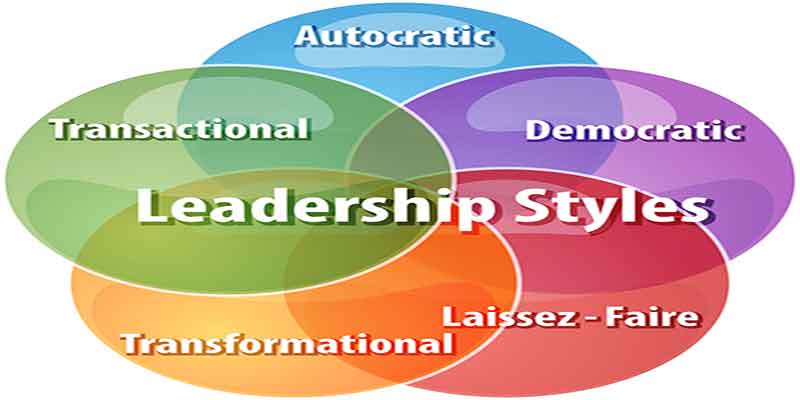Leadership or authority is both an inquiry zone and a functional aptitude that includes a people capacity to “lead” or guide others, groups, or whole associations. In leadership, a leader inspires others to act while simultaneously directing the way that they act. Leader must have the critical thinking skills to know the best way to use the resources at an organization’s disposal. Leadership also refer to an organization’s management structure.
It is an art of motivating a group of people to act toward achieving a common goal. In a business setting, this can mean directing employees with a strategy to meet the company’s needs and demands.
A pioneer is somebody who can perceive how things are frequently improved and who rallies individuals to move toward that better vision.
Leaders can work toward a goal while putting people first. Just having the ability to motivate people isn’t enough — leaders got to be empathetic and connect with people to achieve success . Leaders don’t need to come from an equivalent background or follow an equivalent path. Future leaders will actually be more diverse, which brings a spread of perspectives. Of course, people could afflict my definition.
Authority or leadership is the capacity of an individual or a gathering of people to impact and guide devotees or different individuals from the association to accomplish shared objectives.
Leadership Styles
Transactional Leadership
Transactional leadership is focused mainly on the organization of group. It establishes a clear chain of command and implement a carrot-and-stick approach to all kinds of management activities.
It is viewed as the conditional authority since pioneers offer a trade; they reward great exhibitions and rebuff awful practices.

In transactional leadership, short-term tasks can be completed effectively and employees are unlikely to reach their full creative potential in such conditions.
Servant Leadership
In worker initiative, individuals favor power-sharing models of power, organizing the necessities of their group and urge others to settle on aggregate choice. Worker pioneers need authority and furthermore endure an irreconcilable situation by putting their representatives in front of business destinations.
Autocratic Leadership
Autocratic leadership is a more extreme version of transactional leadership. These leaders have significant control over the staff and rarely consider other workers suggestions or share power.
There can also be a lack of creativity due to strategic direction coming from only the leader.
Jobs that are fairly routined or require limited skills is best suited for this leadership. It is also common in military organisations.
Laissez-Faire Leadership
This word is all the more regularly used to portray monetary situations, free enterprise truly signifies “let them do” in French. Laissez-faire leadership can be effective in creative jobs or workplaces where employees are very experienced. In this administration, pioneers screen execution and adequately impart desires to forestall work principles slipping.
Democratic Leadership
This is otherwise called participative administration. In this administration, pioneers regularly request contribution from colleagues before settling on a ultimate choice. Workers have equal opportunity as the leader has to give their decisions.
Employees usually report higher levels of job satisfaction in these environments because there is scope to give an opinion and the company can benefit from better creativity. On the other hand, the democratic process is slowing making a decision, and may not function well where quick decision-making is crucial.
Bureaucratic Leadership
Bureaucratic administration depends on an away from of order, exacting guidelines, and compliance by its supporters.
There can be disarray about the contrast between bureaucratic initiative and despotic administration, which can cover in specific qualities. The principle distinction is that, with the previous, the emphasis is on the pioneer who is liable for settling on all the key choices. Bureaucratic administration, then again, depends more on the whole line of power versus a solitary head.
Charismatic Leadership
There is a sure measure of cover among magnetic and groundbreaking authority in light of the fact that the two styles depend vigorously on the constructive appeal and character of the pioneer.
This authority is normally viewed as less positive on the grounds that the accomplishment of tasks and activities is firmly connected to the nearness of the pioneer. Groundbreaking pioneers manufacture trust in a group that remaining parts when they proceed onward yet when an alluring pioneer isn’t there to direct ,it commonly leaves a force vacuum.
Situational Leadership
Created by the board specialists Paul Hersey and Ken Blanchard in 1969, situational administration is a hypothesis th
at the best heads use a scope of various styles relying upon the circumstance. Be that as it may, numerous individuals have a characteristic authority style that makes exchanging between jobs testing.
Transformational
The groundbreaking authority style is comparable to the mentor style in that it centers around clear correspondence, objective setting and representative inspiration. In any case, as opposed to setting the main part of the vitality into every representative’s individual objectives, the groundbreaking head is driven by a promise to hierarchical targets.
Since such pioneers invest quite a bit of their energy in the enormous picture, such a main is best for groups which will deal with many assigned errands without steady management.
The Characteristics & Qualities of a Good Leader
A pioneer has multidimensional qualities in him which makes him engaging and successful in conduct. The resulting are the necessities to be available during a decent pioneer:
- Physical appearance- A leader must have a pleasing appearance that attracts other people. Physique and health are very important for a good leader to handle any problem or any situation.
- Vision and foresight- If a leader can not foresight ,he can not maintain influence He must have the power to visualize any situations, hence he can easily frame logical programmes.
- Intelligence- A leader who is intelligent can examine problems and difficult situations. He should be analytical so that he can easily weighs the pros and cons and then summarizes the situation. That’s why, a positive mind and mature outlook is very important for a leader.
- Communicative skills- A leader must be able to communicate the policies and procedures with people. His communicative skills should be clear, precise and effective.
- Objective- A leader should have a fair outlook so that he can free from bias. His opinion and judgement should be based on acts and logic.
- Knowledge of work- A leader should have knowledge about the nature of his work and should also know about the nature of work of his subordinates, this way he can win the trust and confidence of his subordinates.
- Sense of responsibility- Responsibility and accountability towards an individual’s work are extremely important to bring a way of influence. a pacesetter must have a way of responsibility towards organizational goals in order that he can get maximum of capabilities exploited during a real sense. He has got to motivate himself and arouse and urge to offer better of his abilities. during this way, he can motivate the subordinates to the simplest.
- Self-confidence and will-power- A leader must have confidence in himself that is important to earn the confidence of the subordinates. He should be trustworthy to all others and should handle all types of situations with full will power.
- Humanist- This characteristic to be available in a pioneer is basic since he manages individuals and is in close to home contact with them. He needs to manage the individual issues of his subordinates with unprecedented thought and thought. Along these lines, treating the people on helpful grounds is fundamental for building a harmonious domain.
- Empathy- A leader should understand the problems and complaints of employees and should also have a complete view of the needs and aspirations of the employees to solve their problems or for any other necessary. He should step into the shoes of others to understand their situations. This helps in improving human relations with the employees.
- Courage- Leaders must have courage to take the risk . Courage is a key skill for good leaders. Instead of staying away from issues or permitting clashes to rot, mental fortitude empowers pioneers to step up and move things the correct way and that is the reason chief needs to have boldness.
- Respect- A leader should treat people with respect. It will ease tensions and conflict, create trust, and improve effectiveness and also build a good relationship with people who follows the leader.
- Self-Awareness- The better leader understands himself, the more effective he can be. To know others, other thoughts,a leader first know about himself.
- Gratitude- Giving thanks will actually make one a better leader. Gratitude can lead to higher self-esteem, reduced depression and anxiety, and even better sleep so the Leader should maintain this quality.
- Learning Agility- Learning agility can be described as the ability to know what to do when one doesn’t know what to do. When one is able to excel in unfamiliar circumstances, he might already have learning agility. But through practice, experience, and effort. explore anybody can foster learning agility.
- Influence- Some people feel “influence” like a dirty word. Yet, having the option to persuade individuals through intelligent, passionate, or helpful interests is a part of a viable pioneer. Influence needs to be done authentically and transparently and it is quite different from manipulation. It requires emotional intelligence and trust-building to influence those people.
Leadership and Management – Relationship & Differences
Leadership and management are the terms that are often considered synonymous but there are some relationships between them and also there are some limitations.
Relationship between leadership and management
Leadership is an essential part of effective management that needs to be understood by people. As an important component of management, remarkable leadership behavior depends upon building an environment during which each and each employee develops and excels within the organization. Leadership is defined as the potential to influence the group efforts towards the accomplishment of goals
Pioneers create procedures that construct and continue the upper hand. For ideal hierarchical productivity, associations require hearty authority and vigorous administration.
Differences Between Leadership and Management
Leadership differs from management in many ways; they are-
- While managers make the structure of the organization and delegate authority and responsibility, leaders provide direction by developing the organizational vision then communicate them to the workers and encourage them to realize it.
- While management includes specializing in planning, organizing, staffing, directing, and controlling; leadership is especially a neighborhood of directing function of management. Pioneers spend significant time in tuning in, building connections, cooperation, moving, inspiring, and convincing the adherents.
- While a pacesetter gets authority from his followers, a manager gets his authority by virtue of his position within the organization.
- While managers follow the organization’s policies, rules- regulations, and procedures, the leaders follow their own motivation.
- Management is more of science because the managers are exact, planned, standard, logical, and more of mind. Leadership, on the opposite hand, is an art. In a corporation, if the managers are required, then leaders are a must/essential.
- While management deals with the technical matters in a corporation; leadership deals with the in an organization.
- When management is reactive, leadership is proactive.
- Management is predicated more on written communication; on the opposite hand, leadership is predicated more on verbal communication.
Leadership or authority went with the board sets up a substitution course and utilizes assets to acknowledge it. Both leadership and management are essential for individual also as organizational success.
Leadership Skills for Employees
Initiative abilities additionally incorporate the aptitudes individuals need to direct representatives toward the accomplishment of the business objectives, move them, drive change, and convey results.There are numerous different administration abilities required inside the working environment, however the first sought after ones include:
- Active listening
- Empathy
- The ability to share clear messages and make complex ideas easy to know for everybody
- Strategic thinking skills
- Risk management skills
- Organising skills
- Project management skills
- Creativity
- The ability to inspire and convince others
- Flexibility
- The ability to show information into action
- Project planning
- Active listening
- Planning and delivery skills
- People management skills
- The ability to assess employees strengths and weaknesses
- Business storytelling
- Time management
- The ability to create trust
- Strong communication skills
- Positivity
- Reliability
- Management skills
- Humility
- Strategic thinking skills
- Honesty/ Integrity
- Relationship
- The ability to align the workers with the corporate values and goals
- A strong leadership vision
- Recruiting skill
- Persuasion skills
- The ability to assist employees find meaning at work
- Strong charisma
- Resilience
- Emotional Intelligence
Importance of Leadership
Leadership or administration is a critical capacity of the board which assists with boosting proficiency and to acknowledge hierarchical objectives. The resulting focuses legitimize the significance of administration during a worry.
- Initiates action- Leader might be a one that begins the work by conveying the strategies and plans to the subordinates from where the work really begins.
- Motivation- A pacesetter ends up being assuming a motivating force job inside the worry’s working. He persuades the laborers with monetary and non-financial prizes and in this way gets the work from the subordinates.
- Building confidence- Morale implies willing co-action of the workers towards their work and getting them into conviction and winning their trust. A pacesetter are regularly an assurance working by accomplishing full co-activity all together that they perform with better of their capacities as they work to acknowledge objectives.
- Builds work environment- A productive workplace helps in sound and stable development. Accordingly, human relations ought to be kept into mind by a pacesetter . He ought to have individual contacts with workers and will hear their issues and tackle them. He should treat representatives on helpful standing.
- Coordination- Coordination are regularly accomplished through accommodating individual interests with authoritative objectives. This synchronization are regularly accomplished through appropriate and viable co-appointment which should be essential rationale of a pacesetter.
Role of A Leader
The leaders have some roles within the organization; they’re discussed within the below:
- Required in the least levels- Leadership may be a function which is vital in the least levels of management. within the top level, it’s important for getting co-operation in formulation of plans and policies. Inside the center and lower level, it’s required for understanding and execution of plans and projects confined by the most elevated administration. Leadership or Initiative are regularly practiced through direction and guiding of the subordinates at the hour of execution of plans.
- Representative of the organization- A pacesetter, i.e., a manager is claimed to be the representative of the enterprise. He has got to represent the priority at seminars, conferences, general meetings, etc. His role is to speak the rationale of the enterprise to outside public. He’s also representative of the own department which he leads.
- Integrates and reconciles the private goals with organizational goals- A pacesetter through authority attributes helps in accommodating/coordinating the private objectives of the laborers with the authoritative objectives. He’s trying to coordinate the efforts of individuals towards a standard purpose and thereby achieves objectives. This will be done as long as he can influence and obtain willing cooperation and urge to accomplish the objectives.
- Leader solicits support- A pacesetter may be a manager and besides that he’s an individual who entertains and invites support and cooperation of subordinates. This he can treat his personality, intelligence, maturity and knowledge which may provide him positive result. during this regard, a pacesetter has got to invite suggestions and if possible implement them into plans and programmes of enterprise. This way, he can solicit full support of employees which ends up in willingness to figure and thereby effectiveness in running of a priority .
- As a lover , philosopher and guide- A pacesetter must possess the three dimensional traits in him. He are often a lover by sharing the emotions , opinions and desires with the workers. He are often a philosopher by utilizing his intelligence and knowledge and thereby guiding the workers as and when time requires. He are often a guide by supervising and communicating the workers the plans and policies of top management and secure their co-operation to realize the goals of a priority. Sometimes he also can play the role of a counselor by counseling and a problem-solving approach. He can hear the issues of the workers and check out to unravel them.
Conclusion
A leader always attracts people through his speech, actions, or decisions. A pioneer with high virtues has confidence in morals as a human himself tails them profoundly in each occasion is known as a moral head. A moral head additionally has characteristics, for example, honesty, turning out to be good examples, worry for other people, and separate himself from others by rehearsing virtues, moral administration, and featuring dreams like different pioneers. An ethical leader does not think about himself, he thinks and considers the common goods of people and acts also in that way.
References:




